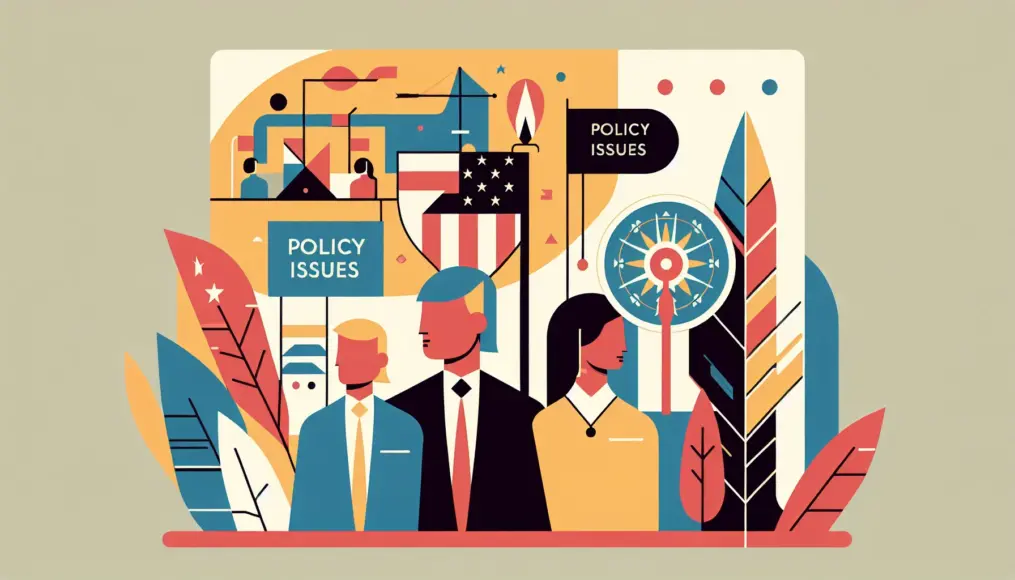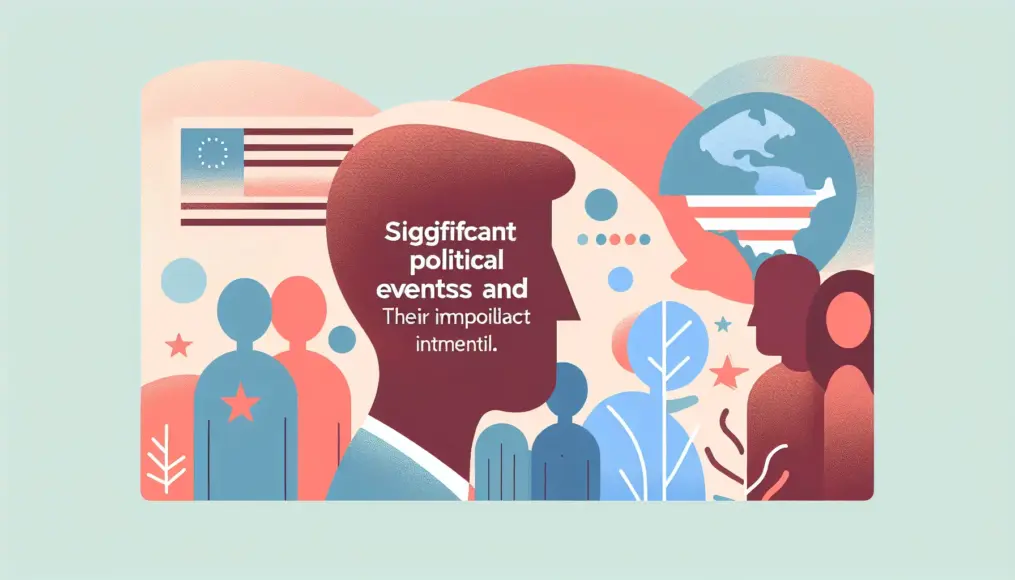Welfare policies play a vital role in our society. As we look back through history, we can see that the concept of welfare has evolved over time, deeply influenced by cultural contexts. Today’s welfare policies are continuously evolving in response to challenges such as an aging population and support for individuals with disabilities. It’s essential for us to think about how we can create a sustainable welfare society moving forward.
In this article, we will explore the historical background and cultural influences of welfare policies, delve into contemporary challenges, highlight the significance of community welfare, and consider future prospects. Let’s get to the heart of how welfare and policy are interconnected.
- We’ll discuss the origins of welfare policies and their cultural influences.
- We’ll examine current challenges like the aging society and support for individuals with disabilities.
- We’ll consider the role of technology and sustainability in future welfare policies.
Historical Background and Cultural Influences on Welfare Policy
Welfare policy has been designed to enhance the well-being of society as a whole, and its history is closely intertwined with cultural factors. As our society grapples with various issues, welfare policies have continuously evolved over time. In this chapter, we will delve into the origins of welfare policy and the cultural elements that have shaped it, exploring how the current welfare system has come to be.
The Origins of Welfare Policy
The roots of welfare policy can be traced back to ancient societies. In early communities, a strong sense of responsibility as members of a group fostered a spirit of mutual aid. It was within this cultural context that systems for helping those in need naturally developed. Particularly during times of social crisis, such as wars or disasters, the importance of welfare becomes even more pronounced.
As we entered the modern era, the Industrial Revolution and urbanization significantly transformed social structures. During this time, welfare policy began to be recognized as a role of the state, leading to the establishment of laws and systems. This shift marked a transition of welfare from being viewed as an individual or family issue to one that concerns society as a whole.
- Welfare policy originated from the spirit of mutual aid in ancient communities.
- With modernization, welfare policy became established as a state responsibility.
- The significance of welfare tends to increase during social crises.
The Interaction between Culture and Welfare
Welfare policy is closely connected to culture. The varying cultural backgrounds of different countries and regions influence ideas and systems related to welfare. For instance, in cultures that place a high value on family, support within the family unit is emphasized, often reducing the perceived need for institutional welfare. Conversely, in cultures with a strong emphasis on individualism, the importance of state-provided welfare may rise.
Cultural factors also affect the acceptance and implementation of welfare policies. When a welfare system succeeds in a particular region, it often reflects the unique cultural values and beliefs of that area. Therefore, considering cultural elements during the formulation of welfare policies is crucial.

If you found this article interesting, you might also enjoy reading “Exploring the Psychological Impact of Social Welfare Principles and Policies.” This article offers an in-depth look at the psychological effects of welfare policies on individuals and society, providing a deeper understanding of the relationship between cultural background and policy.
- Cultural backgrounds influence the perspectives on welfare policy.
- In family-oriented cultures, there may be a lower perceived need for institutional welfare.
- The success of welfare policies often involves the specific cultural values of the region.
Challenges in Modern Welfare Policy
Contemporary welfare policies are facing a variety of challenges. Among the most pressing are the implications of an aging society and the current state of support for individuals with disabilities. Addressing these issues requires an understanding of the limitations of existing welfare systems and the social contexts in which they operate, as well as a concerted effort to seek effective solutions. In this section, we’ll take a closer look at the impact of an aging population and the current landscape of disability support.
The Impact of an Aging Society
Japan is experiencing rapid aging, and this demographic shift is significantly altering welfare policies. The increase in the elderly population is driving up the demand for healthcare and nursing services, adding strain to the welfare system. As a result, the government is compelled to reassess welfare policies, with a pressing need to create sustainable systems.
Beyond merely providing medical and caregiving services, there is a growing necessity for support that enables seniors to live independently. Initiatives that promote collaboration with local communities and help seniors remain in familiar environments are becoming increasingly important.
- The aging population is increasing the demand for healthcare and caregiving services.
- There is a pressing need to reassess welfare policies.
- Supporting the independence of seniors is a critical challenge.
The Current Landscape of Disability Support
Support for individuals with disabilities is another vital issue in modern welfare policy. For disabled individuals to thrive in society, appropriate support is essential. However, many face significant barriers to employment and social participation. Consequently, welfare policies are in search of new frameworks to protect and assist the rights of individuals with disabilities.
Moreover, effective disability support relies heavily on collaboration with local welfare and community initiatives. Building an environment where communities welcome and integrate individuals with disabilities is key to the success of welfare policies.

If you found this article interesting, you might also want to check out the article “Considering Solutions for Aging: The Importance of Maintaining Health and Community Support.” It delves into specific strategies for addressing aging and the role of local communities, providing deeper insights into welfare policy.
- Employment opportunities for individuals with disabilities are currently limited.
- New frameworks are needed to protect the rights of individuals with disabilities.
- Collaboration with local welfare initiatives plays a crucial role in supporting individuals with disabilities.
The Role of Community in Regional Welfare
Regional welfare is a system that enables residents to support each other in their daily lives. When this support is fostered throughout the community, welfare policies can operate more effectively. In today’s society, which faces challenges such as an aging population and the need for assistance for people with disabilities, the role of community is becoming increasingly vital. In this chapter, we will explore the significance of regional welfare and how collaboration with the community bolsters these efforts.
The Importance of Regional Welfare
Regional welfare aims to empower local residents to take charge of their own welfare. This approach benefits not only those receiving welfare services but also those providing them. As connections within the community deepen, feelings of loneliness and social isolation can be mitigated, leading to a richer life for everyone involved.
Moreover, regional welfare can tailor services to meet the unique needs of the community. When local residents take the lead in identifying and providing the necessary support, welfare becomes more efficient and effective. Such initiatives contribute to the overall improvement of welfare in the region.
- Community-led support is the foundation of regional welfare
- Regional welfare helps prevent isolation and fosters a richer life
- Tailoring services to specific needs is possible
Examples of Collaboration with the Community
Successful regional welfare relies heavily on collaboration with the community. For instance, by partnering with local volunteer organizations and nonprofits, a wider range of services can be offered. This collaboration makes it easier for diverse individuals to participate and raises overall awareness of welfare issues within the community.
A specific example is the “meal delivery service” designed to support local seniors. This service, run by community volunteers, not only delivers meals but also facilitates well-being checks and conversations, promoting social interaction. Such initiatives strengthen community bonds and contribute to the enhancement of welfare throughout the region.

If you found this article intriguing, you might also enjoy our piece on “Concrete Solutions to Address the Aging Population and Low Birthrate.” This article explores multifaceted approaches to the challenges of an aging population, including the role of community. It delves into how these insights can be practically applied in the field of welfare policy.
- Collaborating with the community is key to the success of regional welfare
- Cooperation with volunteer organizations and nonprofits allows for a diverse range of services
- The meal delivery service for seniors is one example of strengthening community ties
Future Perspectives on Welfare Policy
The future of welfare policy is expected to undergo significant changes, driven by advancements in technology. New technologies, such as AI and IoT, are being integrated into welfare services, paving the way for more efficient and effective service delivery. Additionally, fostering collaboration among local communities is essential for realizing a sustainable welfare society. In this section, we will explore the intersection of technology and welfare, as well as the initiatives aimed at creating a sustainable welfare system.
The Fusion of Technology and Welfare
Technology has become a crucial element in enhancing the quality of welfare policies. In particular, data analysis powered by AI and real-time health monitoring through IoT devices are gaining attention. These innovations enable welfare services to be more personalized, allowing for support that is tailored to the specific needs of users.
For instance, health management apps designed for the elderly collect daily health data and alert family members or healthcare providers in case of anomalies. This not only simplifies health management for seniors but also ensures that necessary support is provided promptly. The adoption of such technologies improves the quality of welfare services and enhances the overall quality of life for users.
- The introduction of technology enhances the quality of welfare policies.
- Personalized support is made possible through the use of AI and IoT.
- Health management apps support the lives of the elderly.
Towards a Sustainable Welfare Society
Building a sustainable welfare society hinges on the role of local communities. By fostering a collaborative structure among residents to support welfare initiatives, systems can become sustainable. This requires strong community leadership and active volunteer involvement.
Moreover, welfare policies must be adaptable to the unique characteristics of each region. For example, in areas facing declining birth rates and an aging population, there is a need to strengthen support for the elderly while creating an environment conducive to retaining younger residents. Cultivating a collective awareness of welfare across the community is vital for achieving a sustainable society.
- Cooperation from local communities is essential for a sustainable welfare society.
- Flexible policy responses tailored to regional characteristics are necessary.
- It’s important for the entire community to foster a sense of support for welfare.
Conclusion
In this article, we explored the historical background of welfare policies, current challenges, the significance of community welfare, and future prospects. It became clear that welfare policies have evolved in response to cultural and regional characteristics. Moreover, the integration of technology and collaboration with local communities are pivotal in achieving a sustainable welfare society.
Looking ahead, welfare policies will need to diversify even further, evolving with a focus on empowering local residents. This shift has the potential to create a society where everyone can live with a sense of security. It is essential for each of us to pay attention to this critical issue and engage actively.
- Welfare policies evolve according to culture and region
- The collaboration between technology and local communities supports sustainable welfare
- We are called to actively engage with welfare issues
We encourage you to deepen your understanding of welfare policies and consider participating in welfare activities in your own community. We also welcome your thoughts and feedback in the comments section!



Comment